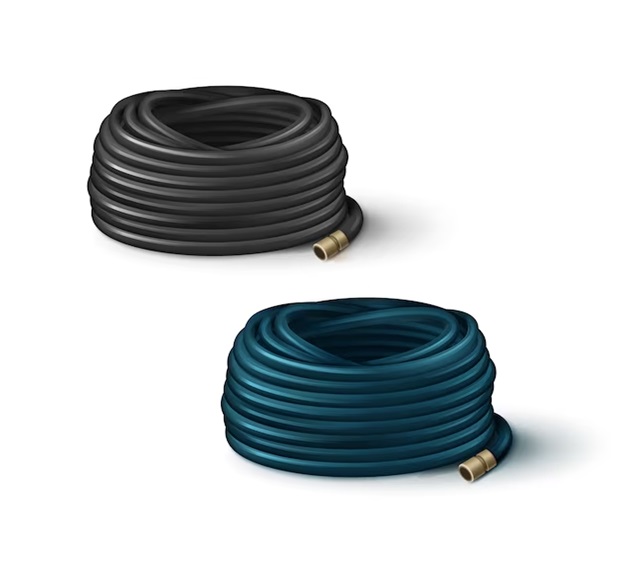Everything You Need to Know About Hydraulic Hose Pipe Maintenance

In heavy machinery and industrial equipment, hydraulic systems reign supreme, harnessing the power of fluid dynamics to enable precise and efficient operations. At the core of these intricate systems lie hydraulic hose pipes – flexible conduits responsible for carrying hydraulic fluid under high pressure. Proper maintenance of these crucial components is paramount to avoid costly downtime, equipment failures, and potential safety hazards. In this comprehensive article, we will delve into everything you need to know about hydraulic hose pipe maintenance, equipping you with the knowledge to ensure seamless operations and extend the lifespan of your hydraulic systems.
Understanding Hydraulic Hose Pipes
Before delving into the nuances of maintenance, it is essential to grasp the significance of hydraulic hose pipes within industrial setups. These hoses, typically made of durable materials such as synthetic rubber, thermoplastics, or Teflon, are engineered to withstand extreme pressures and a wide range of temperature variations. Functioning as the vital link in hydraulic systems, these hoses facilitate the transfer of hydraulic fluid from one component to another, ensuring the smooth operation of various machinery, from pumps to actuators and cylinders.
The Importance of Regular Inspections
The foundation of effective hydraulic hose pipe maintenance lies in conducting regular and thorough inspections. By identifying potential issues at their early stages, you can prevent catastrophic failures and significantly reduce the risk of prolonged downtime. When inspecting your hydraulic hoses, pay close attention to the following aspects:
- Leaks: Fluid leakage is one of the most common issues with a hydraulic hose pipe. Inspect the hoses meticulously for any signs of leakage, as even small leaks can lead to a gradual loss of fluid and, consequently, a drop in system efficiency. Identifying and addressing leaks promptly can help avoid costly consequences.
- Abrasion: Hydraulic hoses are often exposed to harsh environments, where they may come into contact with abrasive surfaces or other equipment. Regularly check for signs of external wear and tear caused by rubbing or chafing, as abrasion can weaken the hose’s outer layer, making it vulnerable to damage.
- Cracks and Fraying: Inspect the entire length of the hose for any visible cracks, cuts, or fraying. These signs can indicate internal damage and pose a significant risk to the hose’s structural integrity. If detected, the affected hoses should be replaced promptly.
- Twists and Bends: Ensure hydraulic hoses are not excessively twisted, kinked, or bent. Such irregularities can restrict fluid flow, lead to inefficiencies, and potentially culminate in premature failure. Employ proper hose routing techniques to maintain the hoses’ natural form and prevent strain.
- Corrosion: In industrial environments exposed to corrosive substances or outdoor elements, check for signs of corrosion. Focus particularly on hose fittings and connectors, which are more susceptible to corrosive damage. Regular cleaning and protective measures can help mitigate this risk.
- Fittings and Couplings: Inspect hose fittings and couplings for signs of leaks, rust, or physical damage. Properly secured and functioning fittings are critical to the overall effectiveness and safety of the hydraulic system.
Proper Handling and Storage
Beyond regular inspections, proper handling and storage practices are pivotal in maintaining hydraulic hose pipes in optimal condition. Consider implementing the following measures:
- Avoid Sharp Bends: When routing hydraulic hoses, ensure they are free from sharp bends or kinks that could lead to stress and deformation. A hose subject to constant pressure from sharp bends may experience reduced performance and a shortened lifespan.
- Use Adequate Length: Ensure the hose’s length is appropriate for the intended application and environment. Using excessively long or short hoses can lead to tension during equipment movement, potentially resulting in damage.
- Protect From External Damage: Shield hydraulic hoses from potential external hazards, such as heavy machinery, sharp edges, or abrasive surfaces. Install protective covers or guards to reduce the risk of damage caused by accidental contact.
- Secure Hose Ends: Cap or plug any unused hose ends to prevent contamination and maintain the cleanliness of the internal hydraulic system. Contaminants like dirt and debris can disrupt the fluid flow and compromise the system’s efficiency.
- Cleanliness Is Key: Before installation, ensure that the hydraulic hose and the entire hydraulic system are thoroughly cleaned and free from dust, debris, or other contaminants. This precautionary step can prevent the introduction of foreign particles into the system, safeguarding its integrity.
Replacing Hydraulic Hose Pipes
Despite meticulous maintenance, hydraulic hoses will inevitably wear out over time and require replacement. Recognising the signs that indicate a hose replacement is essential to prevent sudden failures and potential hazards. The following are key indicators that it’s time to replace hydraulic hose pipes:
- Visible Damage: Examine hydraulic hoses regularly for any visible signs of wear, such as cracks, bulges, blisters, or fraying. These external signs often indicate internal structural damage, making the hose susceptible to failure.
- Reduced Flexibility: A hydraulic hose that has lost its natural flexibility or has become stiff and inflexible is reaching the end of its service life. Flexibility is vital for maintaining smooth fluid flow and accommodating equipment movements.
- Leakage: Persistent fluid leakage, even after tightening hose fittings, clearly indicates hose degradation. Promptly replace any hoses that exhibit leakage to avoid a potential loss of hydraulic fluid and subsequent system malfunction.
Conclusion
Hydraulic hose pipes serve as the lifeline of numerous industrial operations, enabling the smooth functioning of heavy machinery and equipment. Effective maintenance of these critical components is a responsibility that should not be underestimated. By conducting regular inspections, adhering to proper handling and storage practices, knowing when to replace hoses, and ensuring a safe installation, you can extend the lifespan of your hydraulic hose pipes and safeguard the efficiency and safety of your entire hydraulic system. Take the time to invest in maintenance, and you will reap the rewards of seamless operations and minimise downtime in your industrial endeavours.